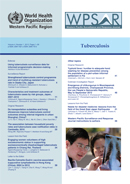Needs for disaster medicine: lessons from the field of the Great East Japan Earthquake
DOI:
https://doi.org/10.5365/wpsar.2012.3.4.010Abstract
Problem: The Great East Japan Earthquake, which occurred in Tohoku, Japan on 11 March 2011, was followed by a devastating tsunami and damage to nuclear power plants that resulted in radiation leakage.
Context: The medical care, equipment and communication needs of four Disaster Medical Assistance Teams (DMAT) during four missions are discussed. DMATs are medically trained mobile teams used in the acute phase of disasters.
Action: The DMATs conducted four missions in devastated areas from the day of the earthquake to day 10. The first and second missions were to triage, resuscitate and treat trauma victims in Tokyo and Miyagi, respectively. The third mission was to conduct emergency medicine and primary care in Iwate. The fourth was to assist with the evacuation and screening of inpatients with radiation exposure in Fukushima.
Outcome: Triage, resuscitation and trauma expertise and equipment were required in Missions 1 and 2. Emergency medicine in hospitals and primary care in first-aid stations and evacuation areas were required for Mission 3. In Mission 4, the DMAT assisted with evacuation by ambulances and buses and screened people for radiation exposure. Only land phones and transceivers were available for Missions 1 to 3 although they were ineffective for urgent purposes.
Discussion: These DMAT missions showed that there are new needs for DMATs in primary care, radiation screening and evacuation after the acute phase of a disaster. Alternative methods for communication infrastructure post-disaster need to be investigated with telecommunication experts.

